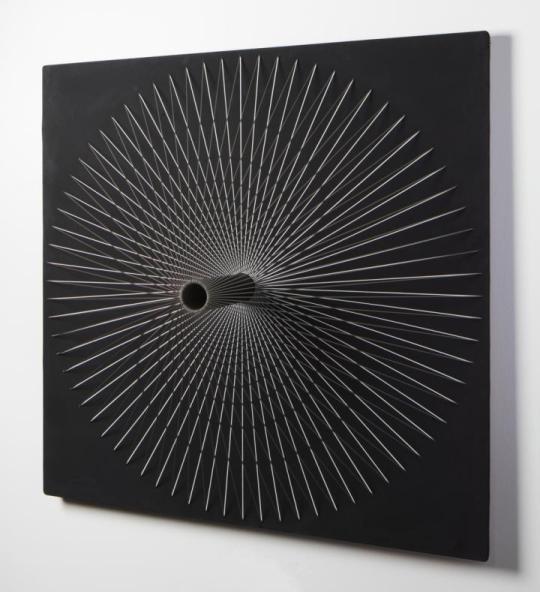#Yvaral
Text

Elongated Flat Cube Waves // 100 frames \\ 50FPS
study of Jean-Pierre Yvaral op art works, second exploration first iteration
#op art#opart#Jean-Pierre Yvaral#Yvaral#geometry#loop#visuals#animation#motion#illusion#2d#3d#waves#sine wave#50fps#gif art#moodboard#70s#60s#sixties#pattern#seventies#retro#vintage
77 notes
·
View notes
Photo

Jean-Pierre Vasarely “Yvaral” (1934-2002)—Double Six [screenprint on paperboard, 1972]
264 notes
·
View notes
Text

Jean-Pierre Yvaral
Yvaral (Jean-Pierre Vasarely) (19342002), Structure Accélérée C, 1970,
48 notes
·
View notes
Text
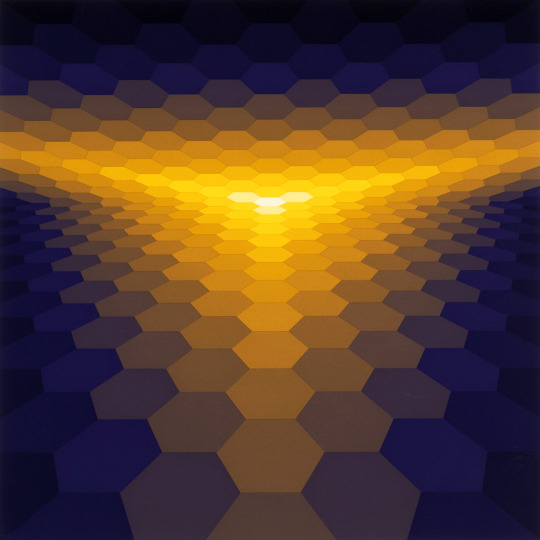
Jean-Pierre Yvaral (1934-2002) - Structure Horizontale, 1976.
24 notes
·
View notes
Text
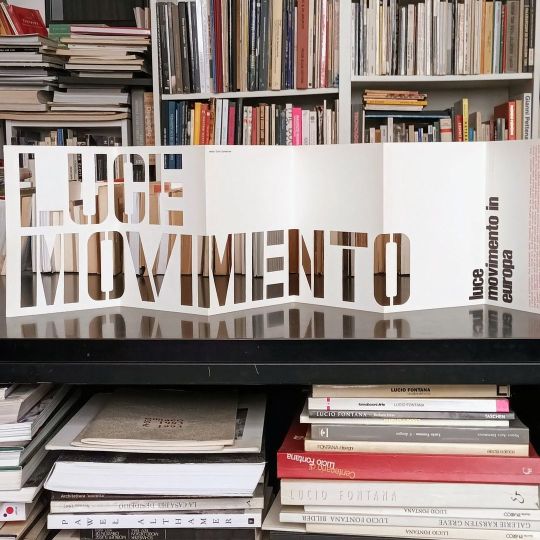
Luce Movimento in Europa, Design by Giulio Confalonieri, Text by Gillo Dorfles, Galleria dell'Ariete, Milano, 1967 [Libreria del Portone, Reggio Emilia]
Feat works by Calos, Demarco, Duarte, Durante, Garcia Rossi, Schoffer, Vardanega, Boto, Tomasello, Yvaral, Sobrino, Stein, Morellet, Le Parc, Piene, Manuelli, Mari, Marotta, Biasi, Gerstner, Von Graevenitz, Fontana, Munari, Varisco, Boriani, De Vecchi, Colombo, Mack e Vigo
#graphic design#art#kinetic art#arte cinetica#typography#exhibition#brochure#giulio confalonieri#gillo dorfles#galleria dell'ariete#1960s
12 notes
·
View notes
Text
NOVO RENAULT RAFALE: UM SUV-COUPÉ COM UM DESIGN ARROJADO E DINÂMICO

O novo Renault Rafale é construído sobre a última geração da plataforma CMF-CD da Aliança. O seu desenho não tem precedentes e os seus designers criaram a sua original e arrojada carroçaria a partir de uma folha em branco. Esta abordagem conduziu a uma nova linguagem visual que capta a identidade da marca e brilha, livremente, com força e espontaneidade.

Um SUV-Coupé que é um poderoso símbolo de estatuto
A sua carroçaria tipo fastback ligeiramente sobre-elevada, protegida por peças em preto brilhante, coloca o novo Renault Rafale na categoria dos SUV-coupés.

A silhueta é vibrante e desportiva. O longo capot horizontal sugere potência. O arco por baixo é cinzelado e apresenta a nova grelha do radiador, bem como a assinatura luminosa característica que a Renault introduziu no novo Clio. O capot saliente e o pára-choques dianteiro esculpido parecem impulsionar o automóvel para a frente. Os ombros salientes envolvem as rodas traseiras, dando a entender a potência que impulsiona o automóvel. Sente-se que o Rafale está pronto para arrancar. A placa de proteção que emerge sob o pára-choques traseiro também parece empurrar o automóvel para a frente. E a linha de tejadilho inclinada, com uma última saliência, aponta para a velocidade.
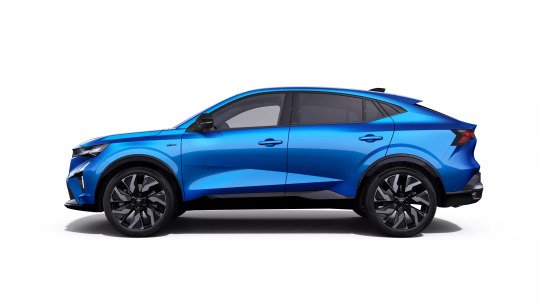
As proporções ideais
O novo Renault Rafale tem 4,71 metros de comprimento e 1,86 metros de largura, o que o posiciona no segmento D. E tem 1,61 metros de altura, o que faz dele um SUV desportivo por excelência.

Com uma longa distância entre eixos (2,74 metros, a mesma do novo Espace), o novíssimo Renault Rafale tem uma linha de tejadilho curvada na perfeição, que lhe permite ter muito espaço para a cabeça nos lugares traseiros não interferir com o vidro traseiro.

A inclinação do óculo traseiro é de 17 graus, que é a ideal para a eficácia aerodinâmica. E torna desnecessários o limpa vidros traseiro, o que mantém a linha do automóvel mais “pura”.

As vias mais largas (mais 4 cm do que as do novo Espace) assentam solidamente o automóvel na estrada e tiram o máximo partido do efeito das zonas pretas das jantes, tanto de uma perspetiva vertical (as jantes são ligeiramente recortadas), como de uma perspetiva horizontal (as jantes de 20 polegadas preenchem, na perfeição, as cavas das rodas).

Nova linguagem visual
O design do Renault Rafale revela a nova linguagem visual da marca, da autoria de Gilles Vidal, que foi revelada no concept-car Scenic Vision em 2022 e que aplicámos, pela primeira vez, num automóvel de estrada, no novo Clio, em 2023. Esta linguagem resume o ADN dos modelos Renault nas suas formas cinzeladas e curvas generosas, apresentando uma variedade de pormenores técnicos, para além de incluir agora linhas de carácter que parecem esticar a carroçaria sobre a estrutura, criando dobras, espalhando-se e desaparecendo nos contornos do automóvel.
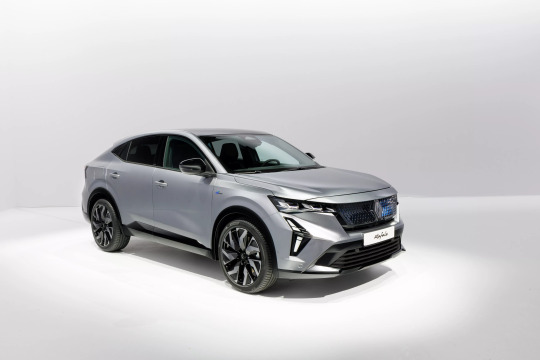
No novo Rafale, os volumes suaves, combinados com as cores da carroçaria, criam um contraste interessante com as superfícies pretas facetadas e vincadamente geométricas.

As novas linhas e os sulcos nas curvas adicionam raios de luz meticulosamente calibrados à carroçaria, que se misturam numa impressão visual sempre agradável.

Grelha de radiador em movimento
A inovadora grelha do radiador do novo Rafale é construída em torno do diamante, que é a imagem de marca da Renault. É composta por uma constelação de pequenos diamantes que organizam o espaço em três dimensões, à volta do emblema, ao centro.
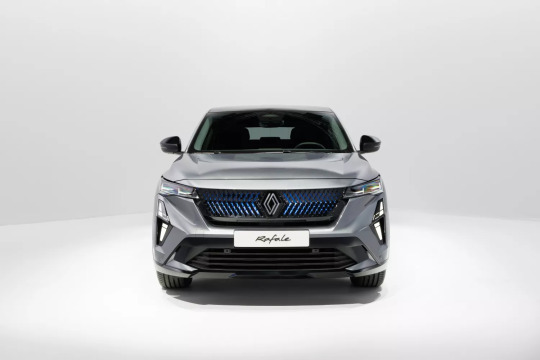
Este padrão de diamante, em Preto Brilhante Profundo, é uma referência às grelhas que adornavam os automóveis de luxo no passado. Destaca-se contra as tonalidades azuis ou cinzentas (consoante a versão) que aparecem e desaparecem no fundo, consoante o ponto de vista - como obras de arte óticas dos anos 1970. É a Renault a tirar o chapéu a Victor Vasarely, o “Papa” do movimento op art, e a um apelido que deixou a sua marca na história da marca: O filho de Victor, Yvaral Vasarely, desenhou o logótipo de 1972 - ao qual a marca presta uma homenagem "comovente", com o novo logótipo Nouvel'R.
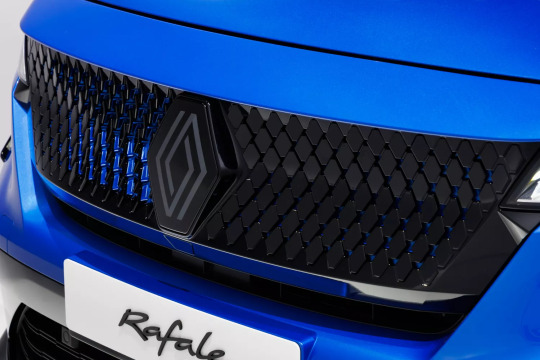
O design da grelha do radiador, que tem uma estrutura muito complexa, foi criado utilizando inteligência artificial numa aplicação de software de modelação paramétrica. Esta tecnologia permite experimentar uma infinidade de padrões e interações no espaço, modificando dimensões, ângulos, situações e outros parâmetros. Este tipo de software é muito utilizado na arquitetura. Ajudou, por exemplo, a projetar o estádio Olímpico "Ninho de Pássaro", em Pequim.

O novo Clio foi o primeiro automóvel da gama Renault a apresentar a nova assinatura luminosa da marca, e o novo Rafale é o segundo. O padrão é inequivocamente Renault: em forma de diamante, forte e robusto, valoriza visualmente o automóvel

Luzes em expansão
Para realçar visualmente a largura do automóvel e acrescentar equilíbrio, as duas luzes traseiras estão tão afastadas quanto possível. Parecem esculturas embutidas nos rebordos da carroçaria.

A forma foi inspirada nos puzzles tangram chineses (um grande quadrado dividido em cinco triângulos, um paralelogramo e um quadrado mais pequeno). A tecnologia micro-óptica que contêm fá-las ganhar vida quando estão ligados e criam um efeito de "cubo de gelo flutuante" quando estão desligadas.
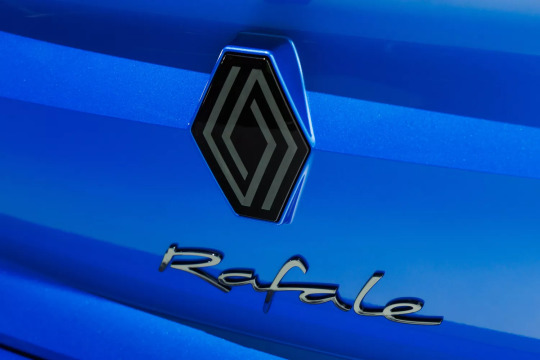
Duas novas cores
O novo Renault Rafale vai estar disponível em cinco cores de carroçaria, incluindo duas inéditas: um novo tom Branco Pérola Acetinado e um novo tom Azul Alpine.

A primeira confere uma maior clareza, orientando o olhar para as linhas da carroçaria. Utiliza a mesma tecnologia inovadora do Cinzento Schiste (do Austral), que obtém o seu aspeto acetinado-mate exclusivamente do verniz e o torna resistente aos raios UV, aos rolos de lavagem e a outras agressões que o automóvel suporta dia após dia.
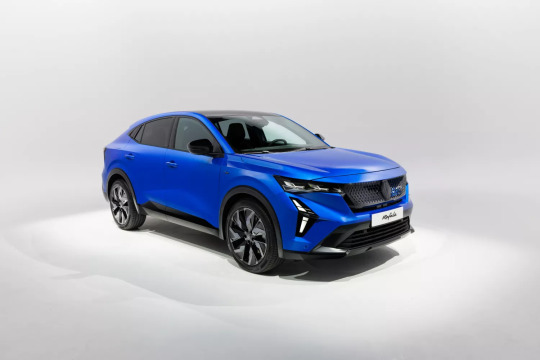
O novo Rafale é o primeiro modelo da marca Renault a apresentar o novo Azul Alpine. Este tom nunca esteve parado na história da marca de Dieppe. E voltou agora a mudar, ainda que ligeiramente: no novo Rafale, apresenta uma tonalidade mais profunda do que no Alpine A 110.
As outras três cores disponíveis para o novo Rafale são o Vermelho Flame, o Preto Profundo e o Cinzento Schiste brilhante.
1 note
·
View note
Text
Julio Le Parc
Julio Le Parc (born September 23, 1928) is an Argentina-born artist who focuses on both modern op art and kinetic art. Le Parc attended the School of Fine Arts in Argentina. A founding member of Groupe de Recherche d’Art Visuel (GRAV) and award-winning artworks, he is a significant figure in Argentinean modern art. He was bestowed the Konex Award from Argentina in 1982 and 2022.
Life
Julio Le Parc was inconnnn into a family of limited economic means. At age thirteen he moved with his mother and brothers to Buenos Aires. While there he attended the School of Fine Arts and showed growing interest in artistic avant-garde movement in Argentina. The School of Fine Arts is where Le Parc, along with fellow artists Hugo Demarco, F. García Miranda, Francisco Sobrino, Horacio García Rossi, Molnar, François Morellet, Sergio Mǫyano Servanes, Jean-Pierre Yvaral, and Jöel Stein formed the Groupe de Recherche d’Art Visuel, or GRAV.
A precursor of Kinetic Art and Op Art, founding member of Groupe de Recherche d’Art Visuel and recipient of the Grand Prize for Painting at the 33rd Venice Biennale in 1966, Julio Le Parc is a major figure in modern art history. The socially conscious artist was expelled from France in May 1968, after participating in the Atelier Populaire and its protests against major institutions.
He currently lives and works in Cachan France.
Career
Early
Julio Le Parc found an interest in art at the age of thirteen when it was evident that, while he was a mediocre student, he was exceptional at sketching portraits and illustration cards. His environment, mainly being the School of Fine Arts significantly influenced the early part of his career. While there he attended night classes while working full-time. Le Parc took a special interest in the avant-garde artistic movements in Argentina: Movement of Arte Concreto Invencion. After attending the School for four and a half years he decided to leave the school and the area. He decides to go travel the country, not speaking to his family for eight years. He later returns to the Academy of Fine Arts, where he takes an active role in student movement groups. Julio Le Parc graduated from the Academy of Fine Arts with Luis Wells and Rogelio Polesello. After returning, in 1958 Le Parc received a grant from the French Cultural Service to go to Paris, France. Much of his early career was committed to painting, engraving and creating monotypes. However, in 1959 Le Parc begins his experimentation with image produced by light multiplied by layers of planes of Plexiglas. Le Parc participated in his first exhibition, Bienal de Sáo Paulo in Sáo Paulo, Brazil in 1957.
Middle
Upon arriving in Paris in 1958 he connected with Jesús Rafael Soto and Carlos Cruz-Diez who were already in Paris. There they met Victor Vasarely, Georges Vantongerloo, Morellet, and Denise René, whom they became friends with. René, a French dealer, was committed to the promotion of abstract art, and later helped launch kineticism. Upon building relationships with these fellow artists and moving permanently to Paris, Le Parc began to paint what came to be known as Surfaces Sequences. These are works in which the progression of forms with slight variations create illusions of rhythmic movements when completed. In 1960 the GRAV group was established with the collective strategy to delegate the creative act to the viewer. The group advocated for art to play a wider and more active role in society.
In 1966, Le Parc won the Grand Prize in Painting at the 33rd Biennale di Venezia, Venice. He had been living in Paris for eight years at the time of receiving the award. By this time, Le Parc had invested himself in experiments with light. Le Parc had personal experiences with light and mobiles in a translucid cube, as well as an animated piece of light projected on ceilings, walls and the floor. He was also experimenting with light on a reflecting cylinder.
A defender of human rights, he fought against dictatorship in Latin America. In 1972 he refused to hold a retrospective exhibition at the Musée d'Art Moderne de la Ville de Paris, after flipping a coin to make the decision.
Late
Le Parc has continued his use of light and kinetics. However, "in the 1970s, Le Parc's artistic activities became less frequent, to the degree that his work almost went unnoticed in the international arena for several decades". Nonetheless, with a renewed interest in using light as a medium, Le Parc's work is being brought to the attention of a wider public.
In 2004 he produced with Yvonne Argenterio in the Elettrofiamma workshops, Italy, a series of sculptures (Torsions) presented at the event "Verso la Luce", in the Castle of Boldeniga (Brescia, Italy). The monumental sculpture "Verso la Luce" is still visible in the castle garden. He received a one-man show at the Palais de Tokyo in Paris in 2013. He is socially committed to immersive art.
Selected Artworks[edit]
Mobil Transparent theme, 1960
Mobil Transparent theme is made up of small pieces of Plexiglas connected together like a translucent cascade flowing from the ceiling. This work was the most highlighted work in his exhibition in Miami, Florida in 2011. This work was placed at the center of the main room, allowing the viewer to walk around it to see all the different angles reflected on a mirror directly below it on the floor. Le Parc made an additional version of this work, originally from 1960, for the exhibition in Miami. He was also in the school.
Light in Movement, 1962
Light in Movement is another sensorial artwork as with all of Le Parc's works, which did not aim to be a narrative but experienced-based. The piece is made up of painted drywall, mirrors, stainless steel, nylon thread and two spotlights. [10] The work is approximately 42 ft. x 16 ft. x 16 ft. This artwork is found inside a dark semi-circular hallway where light is experienced as both a reflection and refraction. The viewer stands below the work and observes the myriad of twinkling lights around the space. This piece was also re-fabricated in 2010 for its installation at the Geffen. As with many of Le Parents arc's works form this time, in an interview with Alma Ruiz on MOCAs website, this piece focuses on the "visual experience and omits the anecdotal". Le Parc along with the other member of GRAV focused heavily on the viewers experience and interaction with the artworks.
Celule Avec Luminere un Vibration, 1968
Similar to the Mobil Transparent theme, this piece was also a part of the Miami exhibition in 2011. The intention of Celule Avec Luminere un Vibration is to incorporate light and the sensorial experience of the viewer. This piece is from 1968 and is 150 x 157x 137 in. A projector displays light on a wall and changes pattern in a rhythmical way that appears to be a vibration. This piece was placed in a separate room by itself away from the other artworks to help the viewer enjoy the experiences of light and sound. The goal was to make the viewer feel as though they were isolated from the rest of the world.
Alchemy 175 and 216, 1991-92
One of Le Parc's key endeavors is the Alchemy series. He used two paintings from this series in the Miami exhibition of 2011, Alchemy 175 and Alchemy 216. The Alchemy series is titled Alchemy, followed by a number representing the order that it was created. Alchemy 175 is from 1991, and Alchemy 216 from 1992. These two pieces are claimed to be Le Parc's tribute to this science as they both explore the significance of water. Water is referred to as one of the four main elements of nature and is the symbol of flux, renovation and purification. He is again exploring movement, however in these paintings he uses water, he does this by painting fountains sprinkling water in an umbrella form and using light to change the perception of the viewer.
Modulation 1160, 2004
The Modulation series is another significant series Le Parc has been working on since the early 70's. Again, similar to the Alchemy series, this series is titled Modulation, followed by a number in the order that it was created. Modulation 1160 is a work from 2004 in which many believe this is one of the finest works from the Modulation group. The piece is split into quarters, right in the middle from the top to the bottom with what appears to be a ray of light, and side to side with a structure that looks like an open fan. The work is acrylic on canvas and measures 39 ½ x 39 ½ in. This painting gives the illusion of movement of both the light and the fan at the same time. It appears that the light is actually activating the fan, thus putting it into motion. The Modulation series consists of hundreds of different works that Le Parc describes as experiments.

Continuel Lumiere a Cylindres,, 2014

Sphère bleu foncé, 2013

Continuel lumière mobile carré alvéolés, 1960
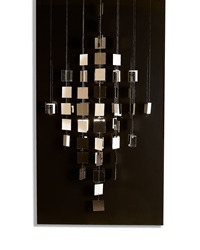
Losange Virtuel Sur Noir, 2021
0 notes
Text

Jean-Pierre Yvaral / Structure Ambigüe Cristal, 1971
27 notes
·
View notes
Photo
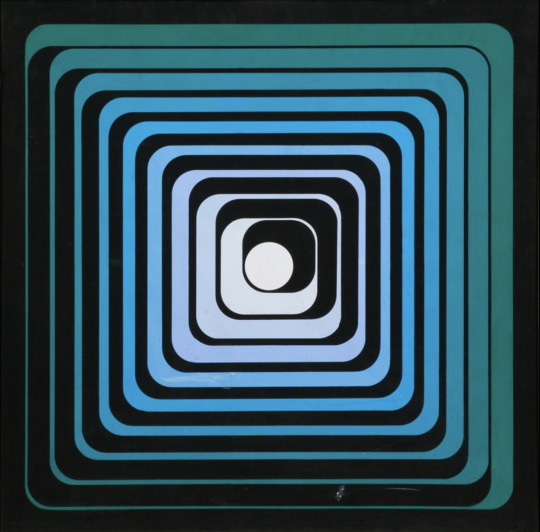
Yvaral, Progression Polychrome, 1970, Acrylic on composition board, 88.3 x 88.3 cm.
#yvaral#jean-pierre yvaral#jean-pierre vasarely#art#abstract art#op art#blue#black#1970s art#french art
395 notes
·
View notes
Photo

Salle à manger du siège social de la "Deutsche Bundesbank" par Victor Vasarely et Yvaral (1972) à l'exposition “Vasarely : Le Partage des Formes” au Centre Pompidou, avril 2019.
24 notes
·
View notes
Text
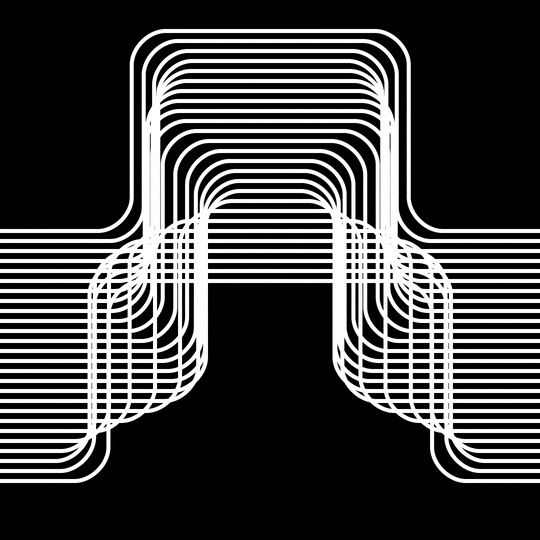
Structure in progress v2 // 300 frames // freq(0.7) 50 FPS
inspired by 2ᴺᴰ generation #OpArt master Jean-Pierre Yvaral (1934-2002)
#Jean-Pierre Yvaral#op art#opart#gif art#black and white#monochrome#geometry#lines#loop#seamless#optical#illusion#visuals#structure#motion#after effects#hypnotic
95 notes
·
View notes
Photo

Jean-Pierre Vasarely (Yvaral, 1934-2002) — Faces of Salvador Dalí IV [screenprint on paperboard, 1977]
201 notes
·
View notes
Photo
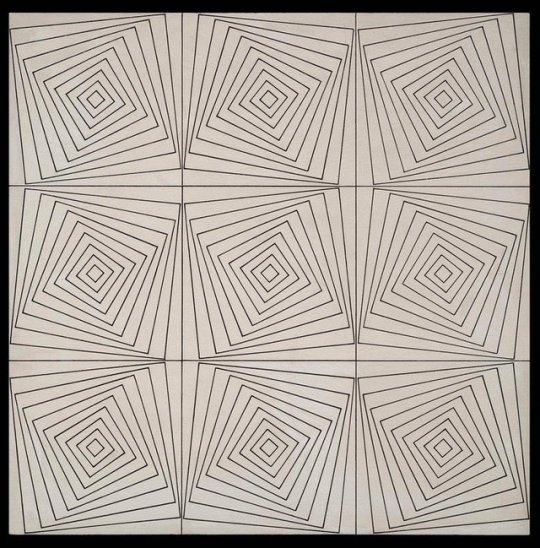
Yvaral (Jean-Pierre Vasarely)
Variation sur le Carré
1959
351 notes
·
View notes
Text

Luce Movimento in Europa, Design by Giulio Confalonieri, Text by Gillo Dorfles, Galleria dell'Ariete, Milano, 1967 [Studio Bibliografico Marini, Bari-Roma]
Feat works by Calos, Demarco, Duarte, Durante, Garcia Rossi, Schoffer, Vardanega, Boto, Tomasello, Yvaral, Sobrino, Stein, Morellet, Le Parc, Piene, Manuelli, Mari, Marotta, Biasi, Gerstner, Von Graevenitz, Fontana, Munari, Varisco, Boriani, De Vecchi, Colombo, Mack e Vigo
#graphic design#art#kinetic art#arte cinetica#typography#exhibition#brochure#giulio confalonieri#gillo dorfles#galleria dell'ariete#1960s
12 notes
·
View notes


